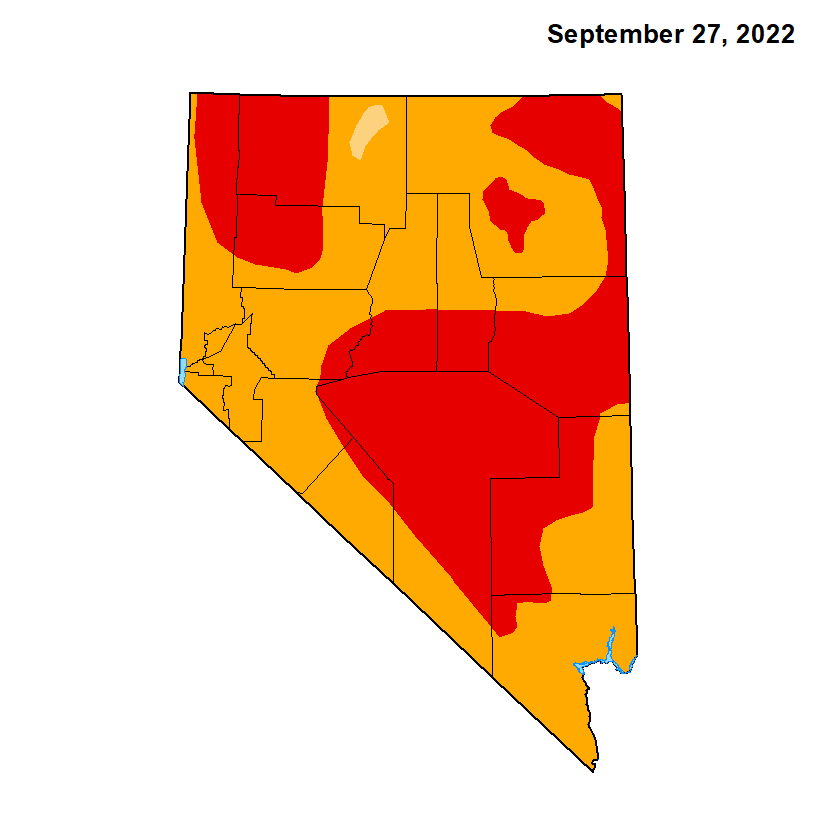Why hasnt recent rain helped Lake Mead much?
LAS VEGAS (KLAS) – Southern Nevada has been in the path of repeated rain systems for the last week. But has the recent rain affected Lake Mead’s water levels?
The good news is that it has helped, but only a little. According to Bureau of Reclamation Public Affairs Specialist Doug Hendrix, as of Wednesday, Jan. 11, “Lake Mead (was) about 28% full, with the elevation today at about 1,045.04. Overall, we currently stand at about 0.3 ft higher than originally projected in December.”
One day later, Lake Mead had risen another .2 feet to 1,045.25 feet above sea level. The last time Lake Mead was at 100% capacity was in mid-1999.

Lake Mead and much of the Colorado River basin have been experiencing a 22-year drought. The water elevation at the end of July 2000, for example, was just under 200 feet higher at 1,199.97 feet.
‘Dead bodies at Lake Mead’: Vegas law firm turns heads with new billboardHendrix said, however, that storms alone have little impact on overall water levels.
“Over the past few weeks, recent storm events and runoff into the tributaries that enter Lake Mead as well as reduced releases from Hoover Dam — due to a decrease in downstream demand — have had some impact on the lake’s elevation,” Hendrix told Nexstar’s KLAS. “While the amount of precipitation received in the lower basin and from tributary inflows helps, rainfall from recent winter storms, alone, isn’t enough to offset the decades-long reservoir declines.”
The National Weather Service office in Las Vegas also said the storm’s impact on Lake Mead was “a drop in the bucket” compared to other sources.
“Rain in the Las Vegas valley does help with Lake Mead’s water levels. However, it is more like a drop in the bucket compared to the contribution from the snowpack in the Upper Colorado River Basin in E Utah, W Colorado, & SW Wyoming.”
Snowpack
The majority of water in Lake Mead comes from snowpack melt from the Colorado Rockies. Those snowpack levels have been rising over the past week as storms hit the Rocky Mountains. Dec. 27 measurements of 102% snowpack in the region — just above normal — had risen to 149% as of Thursday in the Upper Colorado River Basin.
Snowpack at 142% after week of storms in Upper Colorado River BasinDrought
The recent storms in the Sierra Nevada Mountains have also helped with California’s drought — but not as much with Nevada. In California’s drought map, the worst classification, “exceptional drought,” has been wiped off the map, and the second-worst category is nearly gone.
In Nevada, the area of “extreme drought” has decreased in the last three months but remains in place for much of the central and northwest parts of the state.


On Oct. 10, 44.61% of Nevada was classified as being in an “extreme drought.” Now, three months later, 24.45% of the state has that classification. It’s also worth noting that one year ago, 7.5% of the state was listed as being under “exceptional drought.”
ncG1vNJzZmivp6x7sMHRqqyanJOewaqx0meaqKVfo7K4v46nmK2hn6OurXnNnq6sZ6edxm60wKylrWWimrCmutNmqZqhnmK1prjPnptmpJGgsm65xJqbZqWlmLVw